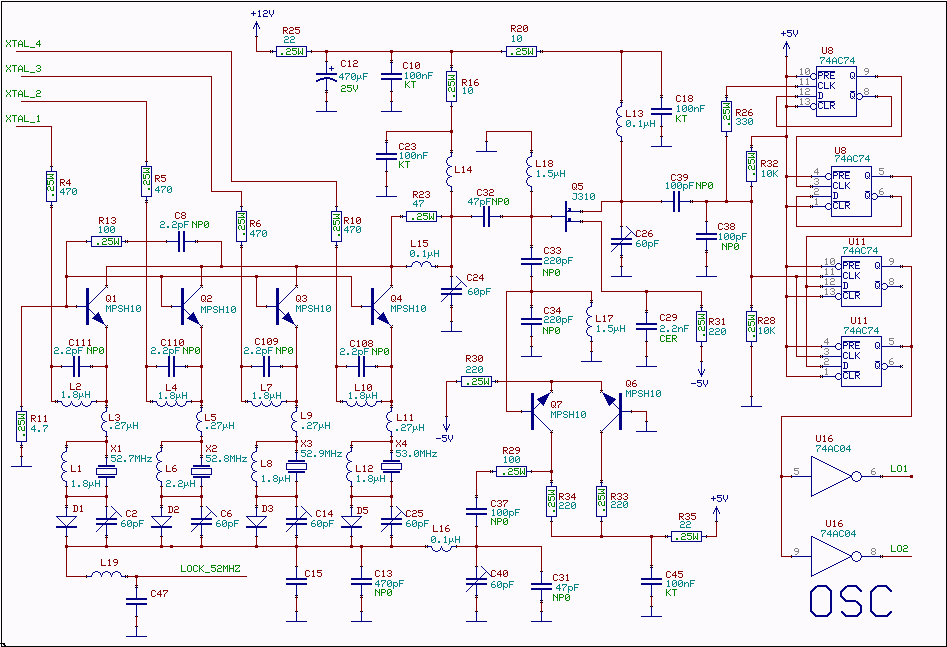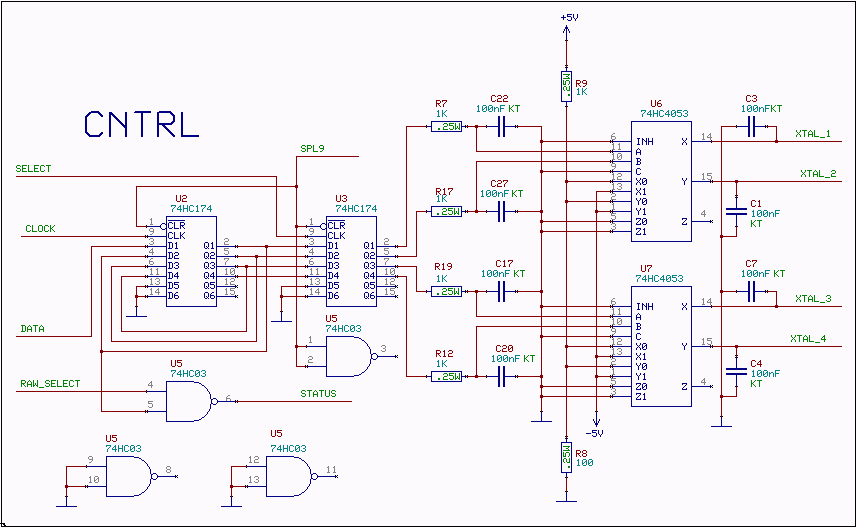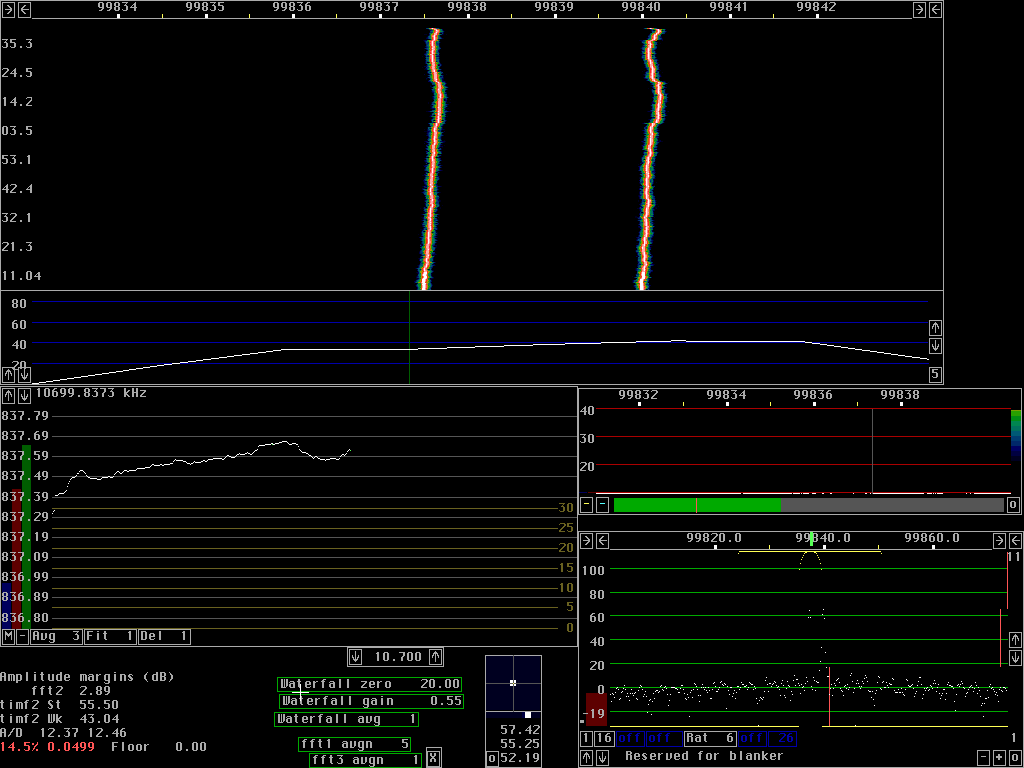A series resonance crystal oscillatorA 52 MHz third overtone crystal is typically 30 ohms at its series resonance according to manufacturer specifications. The crystals used for the prototypes have nearly ten times lower series resistance but they were very expensive.The oscillator is in a way similar to the oscillator used for conversion from 2.5MHz to the baseband I and Q. An oscillator can be seen as an amplifier which has feedback through a filter. The amplifier of a series resonance oscillator must have both a low input impedance and a low output impedance, preferrably well below the series resonance impedance of the crystal, to preserve the selectivity associated with the high Q of the crystal itself. Since this oscillator is used at a higher frequency the amplitude of the oscillations is controlled by a limiter to make the transistor run in class AB. This gives a good compromise between the wideband noise floor and the close in phase noise. Class C is good at low frequencies but a bad idea for VHF oscillators, particularly if they are intended to be used to generate microwave frequencies. Class A amplifiers give the best close in performance and should be used for microwave frequency multiplier chains. Here is some information about state of the art VHF crystal oscillators The complete circuit diagram is shown in fig. 1. Only one of the MPSH10 transistors is conducting, the others are blocked by having +0.5V at the emitter. |


